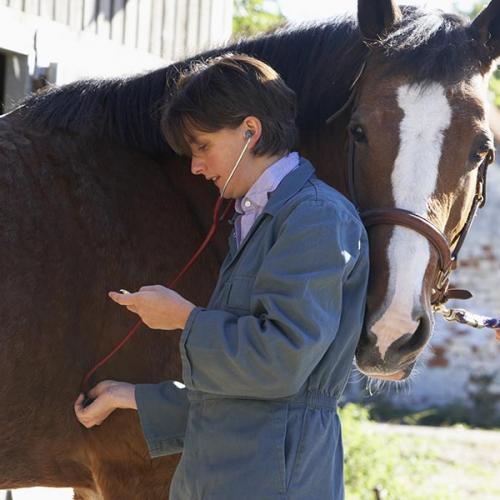There are lots of trainers – good trainers and bad trainers. This is a conversation that comes up a lot with equestrians of all disciplines and all skill levels. When is it time to move on from your current trainer?

What is a pre-purchase examination? At its core, it is an examination to determine the current health status of a horse being considered for purchase. The controversy and problems, up to and including litigation, stem from misunderstanding concerning what the term “examination” means, the role of the seller, the role of the buyer, and the role of the veterinarian.
The role of the buyer is to be explicit in the plans for the prospective horse. What is the horse going to be asked to do? What are the expectations moving forward if this is a performance horse? Does this horse have previous experience in the desired discipline? Does this horse have a history of medical problems, especially those that may impact performance or health? Will this horse receive the same level of care and husbandry as it has become accustomed to? All these, and many more questions, require answering as they can dictate the parameters of the “examination”. The buyer is responsible for the cost of the examination and is allowed to utilize the veterinarian of his/her choice.
The owner’s role is to be as candid as possible regarding the history of the horse, past medical issues, and any behavioral concerns. Current husbandry, vaccination status, deworming status, and nutritional management should all be disclosed. The riding ability required for the prospective horse should be made clear. For example, if the horse passes “examination” but the buyer does not have the skills required to handle the horse, the transaction will ultimately be unsuccessful for the purchaser. The owner does not have the pre-purchase examination performed or should they recommend the veterinarian to be used. Whether the owner is present at the time of the pre-purchase examination should be determined ahead of the scheduled appointment.
The veterinarian provides an objective evaluation of the prospect. Besides a standard physical examination, additional and more intensive examinations (eye, gastrointestinal, lameness, reproductive) might all be included based on the buyer’s goals in purchase. For example, a lameness examination may be a basic gait analysis, manual palpation of the joints for effusion, and evaluation of the hoof for conformation and integrity of the sole. A lameness examination, however, might also consist of flexion tests, analysis on a treadmill, radiographs, bone scans, and/or MRI. A reproductive examination can range from simply a rectal palpation/evaluation to uterine biopsy and culture. As many of these diagnostics can be very expensive, it emphasizes how important the expectations of the buyer be delivered to the veterinarian. The expense and intensity of evaluation does not necessarily parallel the purchase price of the horse but is dictated by the owner.
It is not the veterinarian’s responsibility or role to tell the owner whether or not to purchase the animal being evaluated. Far from it, the veterinarian is to deliver objectively the results of any and all diagnostic and physical exam findings. He/she strives to distance himself/herself from any appearance of conflicts of interest. Based on the expectations of the owner, the veterinarian may emphasize areas of concern in his/her findings that might affect the future performance of the animal and possibly suggest additional diagnostics be performed.
Ultimately, the buyer makes the decision to purchase or not based on all information gathered.
There are lots of trainers – good trainers and bad trainers. This is a conversation that comes up a lot with equestrians of all disciplines and all skill levels. When is it time to move on from your current trainer?
While you are working on New Year’s resolutions for yourself, consider making a few for your horse as well. Here are a few suggestions...
Maintaining a healthy weight is essential for horses as they age. Here are a few tips to help keep your horse fit and trim.
Would you know it if your horse was in pain? Even if you knew your horse was in pain, would you know what type of pain he or she was suffering from?